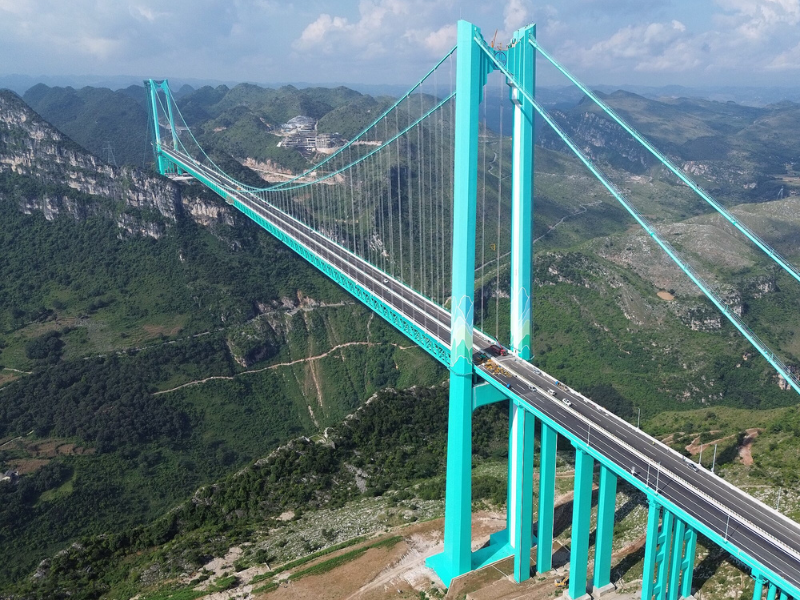
China has once again pushed the boundaries of engineering with the opening of the Huajiang Grand Canyon Bridge, now the world’s highest bridge at an astonishing 2,051 feet above the Beipan River. This towering marvel, stretching 9,777 feet with a main span of 4,660 feet, isn’t just a feat of construction—it’s a bold statement in a nation that’s already claimed the top spot with the 1,854-foot Duge Bridge in 2016. For U.S. companies eyeing global expansion or keen to study market trends, this project offers a glimpse into China’s relentless innovation and a potential gateway to new opportunities.
This isn’t your typical infrastructure project. The Huajiang Grand Canyon Bridge doubles as a tourist hotspot, featuring a restaurant and coffee shop at 2,600 feet above the river, a glass elevator soaring beyond the bridge’s deck, and a skywalk with a vertigo-inducing 1,900-foot drop into the canyon. Bungee jumping is already available, with skydiving and paragliding launches on the horizon. What was once a two-hour road trip across the Huajiang Canyon is now a matter of minutes, slashing travel time and boosting regional connectivity—a practical perk for commerce and tourism alike. Engineers ensured its safety with five days of rigorous load tests, stacking 96 vehicles to mimic heavy traffic without a hitch.
China’s track record with mega-projects like this—think high-speed rail and now record-breaking bridges—signals a market where infrastructure drives economic growth at an unmatched pace. For U.S. firms, especially in construction, engineering, or tourism, this is more than a spectacle. Expanding into China could mean tapping into a system that turns ambitious designs into reality with speed and scale. Joint ventures with local players could unlock access to cutting-edge technology and a workforce skilled in executing such projects. Even if full expansion isn’t on the table, observing China’s approach—how it blends utility with entertainment or secures funding for such ventures—offers valuable lessons for staying competitive back home.
The bridge’s success also hints at China’s ability to attract global attention, drawing millions of visitors and investors. U.S. companies could explore partnerships to bring similar innovative concepts to American markets or study China’s logistics and tourism models to enhance their own operations. With China’s infrastructure boom showing no signs of slowing, now’s the time to watch closely—or step in and ride the wave of this high-flying opportunity.
Talk to us, we’ll help you succeed in China.